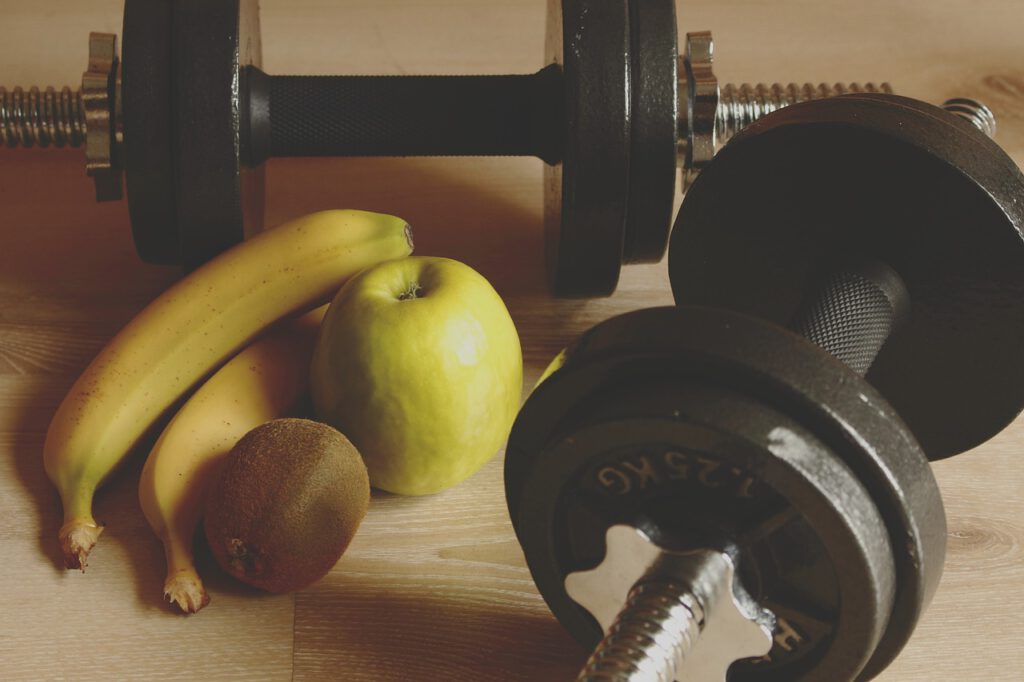
Once upon a time, there was a kingdom of men. These men were strong and confident, but something was not quite right. An unusual phenomenon had begun to spread through the kingdom like wildfire; a mysterious condition known as male gynecomastia. It left the men feeling powerless and embarrassed, until one day when an unlikely hero stepped forward to help them reclaim their strength and confidence.
What is male gynecomastia? In short, it is a medical condition that involves enlargement of breast tissue in males. It can occur for various reasons, including hormonal imbalances or the use of certain medications. Symptoms may include tenderness or pain in the chest area and swelling or enlargement in one or both breasts.
Though embarrassing and uncomfortable to talk about, male gynecomastia affects many men around the world and understanding more about it can help alleviate some of the fear and stigma associated with this condition. In this article we will explore what causes male gynecomastia, how it can be treated, and how those affected can move forward with confidence.
1. What Is Gynecomastia?
Gynecomastia is a condition that affects the male breasts and can be caused by a variety of factors. It’s been theorized that gynecomastia is caused by an imbalance in hormones, but what is the truth behind this theory? Let’s explore.
The term ‘gynecomastia’ refers to overdevelopment of male breast tissue, usually occurring during puberty and sometimes later in life. The cause of gynecomastia isn’t always clear, but it can often be linked to hormonal changes or the use of certain medications and drugs. In some cases, it can also be caused by tumors or other medical conditions.
Although the exact cause of gynecomastia isn’t always known, there is evidence that suggests that an imbalance of hormones may play a role. In particular, elevated levels of estrogen (the female sex hormone) in relation to testosterone (the male sex hormone) has been identified as one potential factor for gynecomastia development. As such, it appears that an imbalance in hormones could be a contributing factor in some cases of male gynecomastia.
From what we know so far, it looks like there may indeed be truth to the theory that an imbalance in hormones could lead to gynecomastia in men. Now let’s take a closer look at the possible causes of male gynecomastia…
2. Causes Of Male Gynecomastia
Gynecomastia is like a phantom lurking in the shadows, causing male chests to swell and ache. But what causes this mysterious condition? It’s important to understand the underlying reasons for male gynecomastia, so let’s take a closer look.
Male gynecomastia can be caused by a wide variety of factors. These include hormone imbalances, certain medical conditions, medications, anabolic steroids or recreational drugs, and even excessive alcohol consumption. Hormonal imbalances are one of the most common culprits – when the ratio of testosterone to estrogen is tipped out of balance in favor of estrogen, it creates a perfect storm for gynecomastia to develop.
In addition to having a hormonal imbalance, certain medical conditions can also cause male gynecomastia. These include kidney or liver disease, testicular tumors, hyperthyroidism or hypothyroidism, and Klinefelter syndrome. Of course, any medication that affects hormone levels may also lead to male gynecomastia – for example, tricyclic antidepressants and some heart medications have been known to induce it.
It’s clear that there are many potential causes behind male gynecomastia – but understanding these reasons is just the first step in addressing this issue. Next up: exploring the signs and symptoms associated with this condition.
3. Signs And Symptoms Of Male Gynecomastia
Male gynecomastia can be an embarrassing condition to deal with, yet it is more common than people think. Fortunately, there are several signs and symptoms that can help men identify and diagnose the condition. To become better acquainted with this issue, let’s take a closer look at the warning signs of male gynecomastia.
The most obvious sign of male gynecomastia is the development of enlarged breast tissue. This can manifest itself as swollen or tender nipples, but it may also involve an overall enlargement of the chest area. Another clue that something is amiss is if a man finds himself unable to pinch any fat in the area. As if these physical changes weren’t enough to work through, men may also experience pain or discomfort due to their condition.
Though it isn’t always the case, many men experience psychological effects such as low self-esteem when dealing with male gynecomastia. This can lead to feelings of helplessness and frustration over what they perceive as a lack of control over their own bodies. It’s important for men suffering from this condition to seek support from family and friends in order to provide emotional relief during this stressful time.
With knowledge of these signs and symptoms, men now have the tools needed to start diagnosing male gynecomastia for themselves – taking a significant step towards finding relief from this persistent condition.
4. Diagnosing Male Gynecomastia
The diagnosis of male gynecomastia is often not straightforward. It requires a careful evaluation of the individual’s history, physical examination, and laboratory tests. Like a puzzle, each piece must be assembled to form the entire picture.
Symptoms such as breast tenderness and enlargement are the clues that lead to the diagnosis of male gynecomastia. A doctor will ask questions about lifestyle factors such as diet, exercise habits, and drug use that could be contributing to the condition. The physical exam includes palpation of the chest area to detect any lumps or masses and an evaluation of other conditions such as thyroid disease or testicular tumors.
Blood tests may also be ordered to rule out diseases that can cause male gynecomastia or check hormone levels. Imaging tests like mammograms or ultrasound scans can help confirm a diagnosis if necessary. Together, these tests can provide a comprehensive assessment so that an accurate diagnosis is made and any underlying medical issues are addressed.
Once the diagnosis is confirmed, treatments for male gynecomastia can begin with reassurance that it will usually resolve on its own over time in many cases.
5. Treatments For Male Gynecomastia
It is understandable to be hesitant about treatments for male gynecomastia. After all, no one wants to think about undergoing any kind of medical procedure. But it’s important to be aware of the available options in order to make an informed decision.
There are three general categories of treatment: lifestyle changes, medical treatments, and surgeries. Each has its own benefits and risks that should be weighed carefully before making a decision.
Lifestyle changes include eating better and exercising more frequently. Eating a balanced diet can help reduce estrogen levels in the body and increase testosterone production, which can reduce the appearance of gynecomastia. Exercise can also help burn fat and increase muscle mass, which can improve the overall look of the chest area.
Medical treatments include medications such as hormonal therapy or anti-estrogens that may help reduce the size of enlarged breasts. Additionally, certain topical creams may be used to decrease breast tissue growth but this method is not always effective.
Surgery may be recommended if other methods have not been successful or if the patient desires a more dramatic result. There are several types of surgery available including liposuction, which removes excess fat, and excisional surgery, which removes excess glandular tissue from underneath the nipple area. It’s important to discuss all your options with your doctor before making a final decision so you understand what each procedure entails and what kind of results you can expect.
No matter which treatment option you choose for male gynecomastia, it is important to remember that complications can arise from any type of medical procedure or treatment plan. It is always wise to discuss potential risks with your doctor prior to beginning any kind of treatment plan in order to ensure your safety and wellbeing throughout the process.
6. Complications Of Male Gynecomastia
Rising like a tide, the complications of male gynecomastia can be overwhelming. Pain, tenderness and swelling in the chest, as well as breast cancer are some of the possible outcomes of this condition. It’s important to understand the risks associated with it.
Beyond physical symptoms, psychological issues can arise too. Social anxiety or reduced self-esteem can result from having an enlarged chest, especially if a man is afraid to seek treatment. In other cases, men might feel embarrassed or ashamed of their appearance and suffer emotionally as a result.
Ultimately, seeking medical advice is essential for dealing with male gynecomastia and its complications. Doing so can help to prevent any further physical or mental issues from occurring in the future. With proper diagnosis and treatment, the risks posed by this condition can be minimized—setting up an avenue for successful prevention and better health overall.
7. Prevention Of Male Gynecomastia
Preventing male gynecomastia is a daunting task. It’s almost like trying to climb Mount Everest without the right equipment! Thankfully, there are a few ways to reduce the likelihood of developing this condition. Here are just a few:
- Exercise: Exercise can help keep your hormones in balance and prevent gynecomastia. Regular exercise can also reduce stress and anxiety, which can be triggers for gynecomastia.
- Diet: Eating a diet rich in whole foods and focusing on healthy fats and proteins can help regulate the hormones that cause gynecomastia. Avoiding processed foods and added sugars will also help to reduce inflammation in your body, which can lead to an imbalance of hormones.
- Supplements: Taking supplements such as fish oil, probiotics, and vitamin D3 can help reduce inflammation in the body and regulate hormone levels. It’s important to talk to your doctor before starting any supplement regimen as some supplements may not be appropriate for everyone.
These are some of the best ways to try to prevent male gynecomastia from occurring or getting worse. Making sure you’re exercising regularly, eating a healthy diet, and taking the necessary supplements will go a long way in reducing your risk of developing gynecomastia. By following these steps, you can set yourself up for success in avoiding this condition altogether – now let’s discuss how to cope with it if you already have it.
8. Coping With Male Gynecomastia
Coping with male gynecomastia can be a difficult and emotionally draining process. According to the American Society of Plastic Surgeons, this condition affects up to 60% of men across their lifetime. For those struggling with this condition, understanding how to cope can make all the difference in maintaining their emotional wellbeing.
An important step in dealing with male gynecomastia is learning to accept it as part of life. This may mean being more open with friends and family about the condition and discussing feelings around it. It also means recognizing that there are many other people who have gone through similar experiences, creating a sense of solidarity when facing this challenge.
Finding healthy ways to manage stress is also key for those dealing with male gynecomastia. Exercising regularly, engaging in activities that bring joy and satisfaction, or even just taking some time out each day for self-care can help provide an outlet for any negative emotions associated with the condition. Additionally, seeking support from mental health professionals such as counselors or therapists can be beneficial in finding more effective coping strategies.
Finding these outlets can help create a sense of resilience when it comes to dealing with male gynecomastia and make it easier to face the day-to-day challenges associated with it. From here, individuals should be able to better understand when they might need extra help from a doctor or specialist in order to move forward on their journey towards greater physical and emotional wellbeing.
9. When To See A Doctor For Male Gynecomastia
For many men, the idea of having gynecomastia can be a difficult one to comprehend. It’s almost like you’re in a thick fog and can’t quite see the path out. But understanding when to seek help is an important step on that journey.
When it comes to male gynecomastia, there are several signs that should prompt you to seek medical advice. These include:
- Pain or tenderness in your chest area
- Swelling or enlargement of the breasts
- Nipple discharge
- Skin irritation or changes around the nipple area
It’s also wise to see a doctor if you’ve been using anabolic steroids, as these can sometimes cause gynecomastia. If your doctor suspects that you may have an underlying medical condition, they may send you for tests such as mammograms or blood tests.
In any case, don’t hesitate to reach out for support if you’re feeling overwhelmed by the thought of dealing with male gynecomastia. From exploring different treatment options to understanding how lifestyle changes can help reduce symptoms, there are many steps that can be taken towards managing this condition.
10. The Outlook For Male Gynecomastia
It is often assumed that male gynecomastia is an issue with no real solution. But while it may not be possible to fully cure the condition, there are treatments available that can help reduce it. So what is the outlook for male gynecomastia?
The prognosis for male gynecomastia differs from person to person, depending on their overall health and the severity of their condition. However, in many cases, lifestyle changes such as diet and exercise can help reduce breast size and improve self-esteem. In more severe cases, medications or surgery may be necessary to reduce breast tissue.
No matter what treatment option you explore, it’s important to remember that your body is unique and will respond differently than someone else’s. It’s also important to understand that male gynecomastia will likely never go away completely. With the right approach though, you can manage your symptoms and enjoy a better quality of life.
Frequently Asked Questions
How Common Is Male Gynecomastia?
Male gynecomastia, or the enlargement of a man’s breast tissue, is a common condition that affects an estimated 40-60% of males. It can cause physical and emotional distress for those affected, and it is important to understand the prevalence of this condition in order to provide support. So, how common is male gynecomastia?
Gynecomastia occurs most often during adolescence as hormones fluctuate. For many men, it disappears on its own within six months to two years. Yet around 40-60% of adult men experience this condition at some point in their lifetime. It can be caused by certain medications and medical conditions, such as obesity, kidney failure, and aging. Additionally, steroid use has been linked with an increased risk of male gynecomastia.
Regardless of whether it occurs during puberty or adulthood, male gynecomastia can be embarrassing and uncomfortable for those affected. Fortunately, there are ways to treat the condition if it causes significant distress – from lifestyle modifications to surgery or hormone therapy. It’s important to speak with a doctor if you’re concerned about the symptoms associated with male gynecomastia so that you can get the help you need.
What Lifestyle Changes Can I Make To Reduce The Risk Of Developing Male Gynecomastia?
Male gynecomastia is a condition that affects up to 60% of men and can be caused by an imbalance in hormones. If you’re looking for ways to reduce your risk, there are some lifestyle changes you can make.
The first step is to keep your weight in check. Excess fat can lead to more estrogen production, which increases the likelihood of developing gynecomastia. Eating a balanced diet and exercising regularly can help you maintain an ideal weight. Additionally, avoiding alcohol and recreational drugs may also be beneficial as these substances have been linked to hormone imbalances.
It’s important to note that male gynecomastia can also be caused by certain medications, so it’s essential to talk with your doctor about any prescriptions or over-the-counter drugs you’re taking:
- Ask about alternatives if possible
- See if you need a lower dose
- Find out if there are other treatments available
By making these lifestyle changes, you can significantly reduce your risk of developing male gynecomastia and potentially avoid serious health complications down the line. Taking proactive steps now will pay dividends later on.
Is Male Gynecomastia Hereditary?
Is male gynecomastia hereditary? This question is one that many men face, as the condition can be uncomfortable and embarrassing. With so much information out there, it’s hard to know where to look for answers. To better understand the role genetics may play in this condition, let’s delve into the facts.
It’s easy to assume that inherited traits are the cause of any health issue, but when it comes to male gynecomastia, this isn’t always the case. To examine this further, let’s take a look at the different causes of gynecomastia:
- Hormonal Imbalance – An imbalance in estrogen and testosterone levels can lead to an increase in breast tissue growth.
- Medications – Certain medications can trigger an abnormal increase in breast tissue growth.
- Illnesses – Health issues such as kidney or liver failure can also lead to male gynecomastia.
- Genetics – In some rare cases, genetic mutations can be linked to the development of male gynecomastia.
In short, while genetics may play a role in developing male gynecomastia for some men, other factors such as hormonal imbalances and illnesses should not be overlooked when looking for answers. It’s important to consult with your doctor if you suspect you have this condition and explore all potential causes before coming to any conclusions. By doing so, you will be able to get a better understanding of your situation and determine what steps need to be taken next for treatment or prevention.
Are There Any Non-Surgical Treatments For Male Gynecomastia?
Are you ever so embarrassed that you don’t dare take your shirt off in public? Do people point and laugh when you do? Don’t worry, there are solutions – yes, even for male gynecomastia!
With the advancement of technology and scientific breakthroughs, there is now a range of non-surgical treatments available for men suffering from this condition. So, no more hiding away in shame or seeking out risky surgical procedures – there’s a solution that works just as well without putting your health at risk.
From herbal supplements to lifestyle changes, these non-surgical treatments can help reduce the size of man boobs and improve the overall appearance of the chest area. And best of all: they’re fast and easy to use! So why not give them a try today? TIP: Exercise regularly and consume healthy foods to reduce body fat levels which will help reduce the size of man boobs.
Are There Any Home Remedies I Can Use To Reduce The Symptoms Of Male Gynecomastia?
Are you sick and tired of having to deal with the embarrassment of male gynecomastia? Well, don’t worry – there are a few home remedies that could help ease your discomfort! But before we get into that, let’s take a step back and look at this situation. It’s hard to go through life feeling like everyone is staring at your chest.
So, if you’re looking for an easy way to reduce the symptoms of male gynecomastia without going under the knife, then you’ve come to the right place. From eating healthier foods to massaging certain areas of your body, there are plenty of ways to make things more bearable when it comes to male gynecomastia.
One option is to make sure that you’re eating a balanced diet with plenty of fiber-rich foods such as fruits and vegetables. Getting regular exercise can also help reduce fat deposits in your chest area, which can help minimize the appearance of man boobs. Additionally, massage techniques like cupping or jelqing have been used by many men with success to reduce their gynecomastia symptoms. So why not give them a try?
At the end of the day, it’s important to remember that there is no one-size-fits-all solution when it comes to reducing symptoms from male gynecomastia. However, these home remedies may be worth a shot if you want an alternative approach without turning to surgery. Who knows – maybe they’ll be just what you need!
Conclusion
Male gynecomastia is a condition that can have serious psychological effects on those who suffer from it. While there is no known cure for male gynecomastia, there are lifestyle changes and treatments available to help reduce the physical symptoms and improve self-confidence. It’s important to remember that, like any other medical condition, early diagnosis and treatment of male gynecomastia is key in finding relief from its symptoms.
In conclusion, male gynecomastia can be a difficult condition to live with but with proper lifestyle changes, treatments and support it doesn’t have to be a life sentence. As the saying goes “where there’s a will, there’s a way,” so if you or someone you know is suffering from male gynecomastia then don’t lose hope – there are options out there to help manage this condition. With patience and perseverance it’s possible to take back control of your health and look forward to brighter days ahead.



